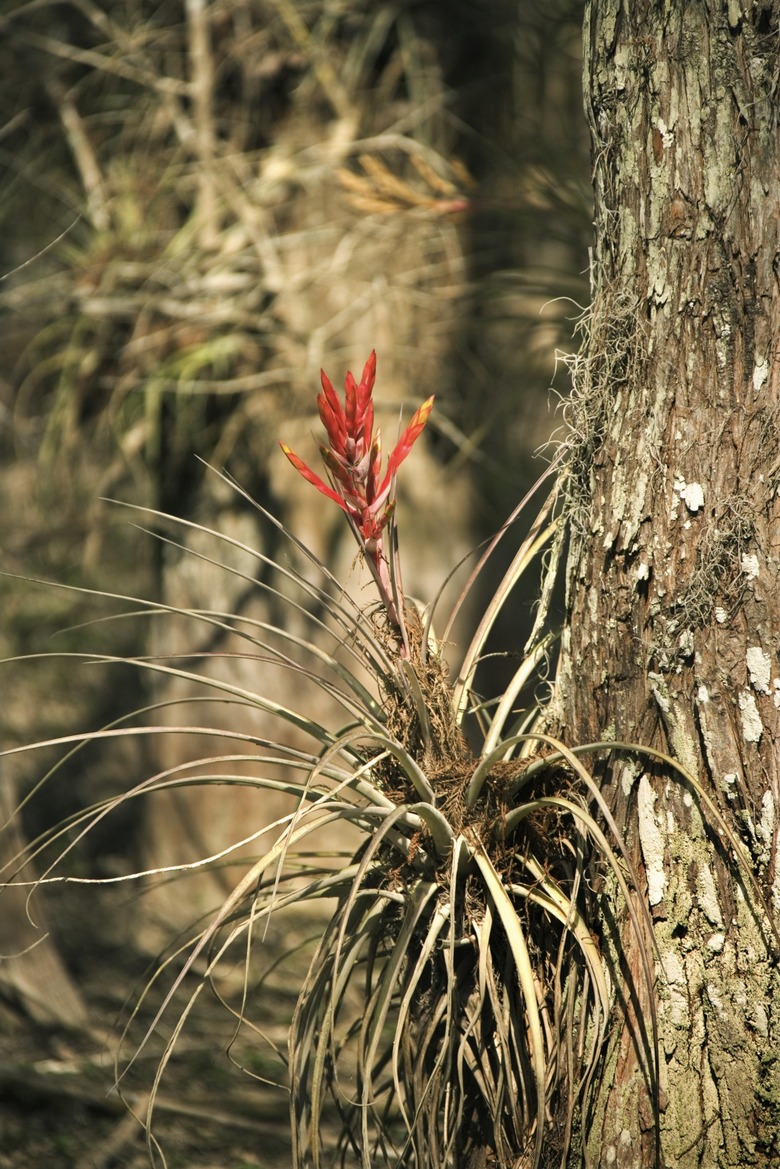How To Attach Bromeliads To Driftwood
Step 1
Submerge the driftwood in a bucket of water to soak out the salt. Change the water at least every two days for two weeks. Dry the driftwood in the sun for a day.
Step 2
Match each bromeliad to a suitable piece of driftwood so that the plant's roots will have sufficient support. A small tillandsia can nestle in a piece of driftwood the size of your hand. A larger bromeliad requires a piece of wood at least the size of the plant. Driftwood with holes and deep crannies work well for mounting bromeliads.
Step 3
- Submerge the driftwood in a bucket of water to soak out the salt.
- A small tillandsia can nestle in a piece of driftwood the size of your hand.
Step 4
Wrap sphagnum moss around the roots of each bromeliad. Use enough to cover the roots, such as half a handful. On a small plant, a thumb-sized amount of moss is enough. Situate the plant's moss-wrapped roots in a depression or cleft in the driftwood.
Step 5
Wind fishing line gently around the base of the bromeliad and the driftwood, wrapping the two together. Wrap the line securely around the plant at the juncture of the leaves and the roots and around the driftwood six to eight times until the plant is securely attached. Leave at least 2 inches of line free and tie the starting end and the end of the line together. The wrapping is only temporary for support, so you don't have to be concerned about the kind of knot or how it looks.
Step 6
- Wrap sphagnum moss around the roots of each bromeliad.
- Wrap the line securely around the plant at the juncture of the leaves and the roots and around the driftwood six to eight times until the plant is securely attached.
Step 7
Cut off the nylon string once the bromeliad roots are firmly attached to the driftwood, after a month or longer, depending on the species and maturity of the plant. Mountable bromeliads, including Tillandsia, Aechmea and Billbergia, use their roots primarily for support. They take in water and nutrients from the air, dust and debris in their environment.
